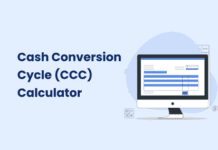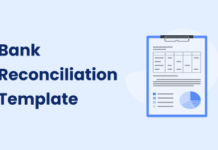Handling debts and payments is crucial for any business, and it’s important to understand the difference between notes payable and accounts payable. Although both involve financial obligations a company needs to meet, they vary in terms of details and formality, impacting financial planning and cash flow differently.
This article aims to explain the difference between notes payable and accounts payable and how they are used in organizations.
What is Accounts Payable?
Accounts payable represent short-term debts owed to suppliers and creditors that help sustain regular business activities. They show up on the balance sheet as current liabilities and come with specific payment terms, like 30, 60, or 90 days.
Accounts payable are informal commitments to pay and are part of the ongoing business cycle. This means that as long as a business is running, there will always be an accounts payable balance. While there’s no interest on these payments, some suppliers may charge penalties for late payments if they’re not made by the due date mentioned in the invoice.
Examples
Accounts payable cover crucial expenses for smooth business operations like:
- Inventory payments – ensure a seamless supply chain and stock availability.
- Payments for utilities and rent – maintain essential infrastructure, preserving operational capabilities.
- Funds allocated to contractors or consultants – enable outsourcing of specialized tasks, leveraging external expertise.
These financial commitments collectively contribute to the overall efficiency and competitiveness of the business.
Role of Accounts Payable
The accounts payable team handles paying a company’s expenses. In smaller companies, it may involve just a few people, but as the company grows, this team can become a whole department. Initially, they might also manage money coming in (accounts receivable), but as the company expands, these roles usually split into separate teams. In larger companies, accounts payable teams have more specific roles, dealing with tasks like managing suppliers, handling purchase orders and invoices, making payments, and overseeing working capital.
What is Notes Payable?
Notes payable is a term used in accounting to describe a type of debt or borrowing that appears on a company’s balance sheet. These are typically longer-term obligations, extending beyond 12 months. Similar to accounts payable, notes payable represent a liability for the company. However, unlike accounts payable, notes payable consist of two parts: the principal amount borrowed and the interest that needs to be paid.
Unlike some financial obligations tied to the ups and downs of business activity, notes payable remain relatively constant over time. They are not directly influenced by fluctuations in the volume of business transactions. Additionally, since notes payable involve interest payments, they come with associated costs and are not free of charge.
Examples
A common example of notes payable is a promissory note, which is essentially a formal contract obligating the borrower to repay a specific amount within a defined timeframe. Unlike traditional loans, payments for notes payable are usually made monthly. It’s important to note that notes payable are not secured by any specific assets, making them unsecured loans.
Role of Notes Payable
Comparing accounts payable to notes payable, it’s evident that notes payable are simpler to handle as they involve fewer complexities. Notes payable essentially mean repaying money borrowed from a bank or other creditors. These are usually longer-term commitments (more than one year) and consist of the amount owed, interest rate, interest and principal payments, maturity date, names of payer and payee, issuer’s name, and the date of the agreement. Notes payable transactions often involve significant payments, such as buying a building, acquiring major equipment, getting a fleet of trucks, funding new product development, or addressing unexpected expenses.
Types of Notes Payables
Knowing the various types of notes payable can assist businesses in better planning their finances.
Short-term Notes: Used for temporary funding. Comes with higher interest rates.
Long-term Notes: Ideal for major investments. Features lower interest rates.
Secured Notes: Backed by collateral. Offers more security.
Unsecured Notes: Based solely on creditworthiness. Requires a strong credit history.
Convertible Notes: Can be converted into equity later. Provides flexibility for future changes.
Businesses should carefully assess these types based on their specific financial needs and situations to make informed decisions.
Key Differences: Accounts Payable Vs Notes Payable
While both accounts payable and notes payable signify owed money, they differ significantly. A notable distinction lies in the fact that accounts payable is invariably a short-term liability, whereas notes payable can be either short-term or long-term obligations. Beyond this, various other differences set them apart.
Can Notes Payable Be Converted to Accounts Payable?
Transforming notes payable into accounts payable is not advisable due to the long-term nature of notes payable. However, there’s a possibility to convert an accounts payable obligation into notes payable when needed. This typically occurs when a company requires more time to settle an accounts payable invoice.
Converting accounts payable to notes payable offers several advantages for businesses:
- Establishing formal agreements can fortify relationships with vendors and business partners.
- Facilitates precise budgeting and forecasting for improved financial planning.
- Stretching payment timelines provides additional cash flow for various operational requirements.
For example, Sarah runs a marketing agency and recently incurred a $3,000 expense for graphic design services. Unexpectedly, a client payment delay has strained her cash flow, making it challenging to pay the $3,000 invoice. Sarah communicated with the service provider, proposing to convert the $3,000 accounts payable into a notes payable arrangement. This shift allows Sarah to establish specific repayment terms, making monthly payments instead of a lump sum. The service provider agrees and issues a promissory note with a one-year term and a 4% interest rate, providing Sarah with a more manageable payment structure.
Before proceeding to convert accounts payables to notes payables, businesses should thoroughly evaluate factors like interest rates, potential penalties, and the overall impact on cash flow to make informed decisions.
What is the Difference Between Notes Payable and Other Long-Term Debt?
The main difference between notes payable and other long-term debt lies in the duration of the financial commitment. While some notes payable obligations have shorter terms, extending less than a year, others can stretch significantly longer, reaching up to thirty years. This prolonged obligation can pose challenges for a company’s cash flow, potentially leading to financial strain.
While long-term debt can assist in managing cash flow by often requiring lower monthly payments compared to short-term notes payable, it comes with the drawback of tying up funds for an extended period. Excessive long-term debt may also impede a company’s growth by complicating efforts to secure additional loans or make external investments.
Which is More Complex: Accounts Payable vs Notes Payable?
Accounts payable pose more complexities compared to notes payable. Notes payable involve two straightforward processes – setting up expenses in the general ledger and making timely payments to note-holders. Whereas managing accounts payable demands a series of complex time-consuming tasks.
The management of accounts payable include:
Vendor Management
Accounts payable departments often handle the sourcing and management of vendors and suppliers, requiring collaboration with the procurement department for effective vendor relationship management.
Invoice Processing
Invoices need careful handling, from delivery to processing. Manual systems may lead to delays, while automation software streamlines processes by electronically delivering invoices, conducting three-way matching for authentication, and expediting invoice approvals.
Payments Processing
Accounts payable involves issuing paper checks, which can lead to delays, check fraud, and additional efforts during bank reconciliation.
Closing Thoughts
Knowing the differences between accounts payable and notes payable is crucial for good financial management. Accounts payable are short-term debts, usually paid within a month, while notes payable have longer terms and need a written agreement. Each type has its own rules, payment recipients, and risks.
In today’s competitive business world, automating accounts payable is a game-changer. It’s not just an expense; it’s a strategic investment. The initial costs are outweighed by long-term benefits like streamlined processes, fewer errors, and time saved. Automation allows businesses to focus on growth, managing cash flow better, and building better relationships with suppliers.
For a tailored solution, Peakflo offers an Accounts Payable Automation solution, designed to make managing payables easier, efficient, and error-free.









![Why AI Sales Calls Are Making Good Sales Reps Even Better [2025 Guide] ai sales calls](https://cdn-kmjmp.nitrocdn.com/YvtqmrsiHUxqerlSiZgbfzqqTARWTElr/assets/images/optimized/rev-834053b/blog.peakflo.co/wp-content/uploads/2025/09/65168cf6-3001-4733-8cbc-12d5684cf449-218x150.webp)

































